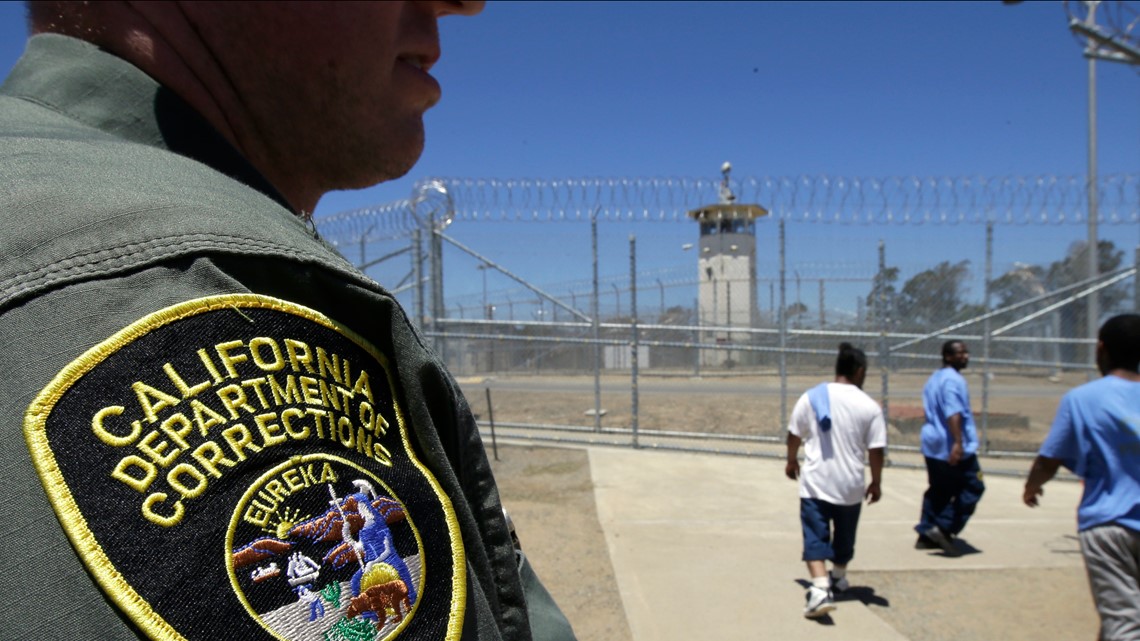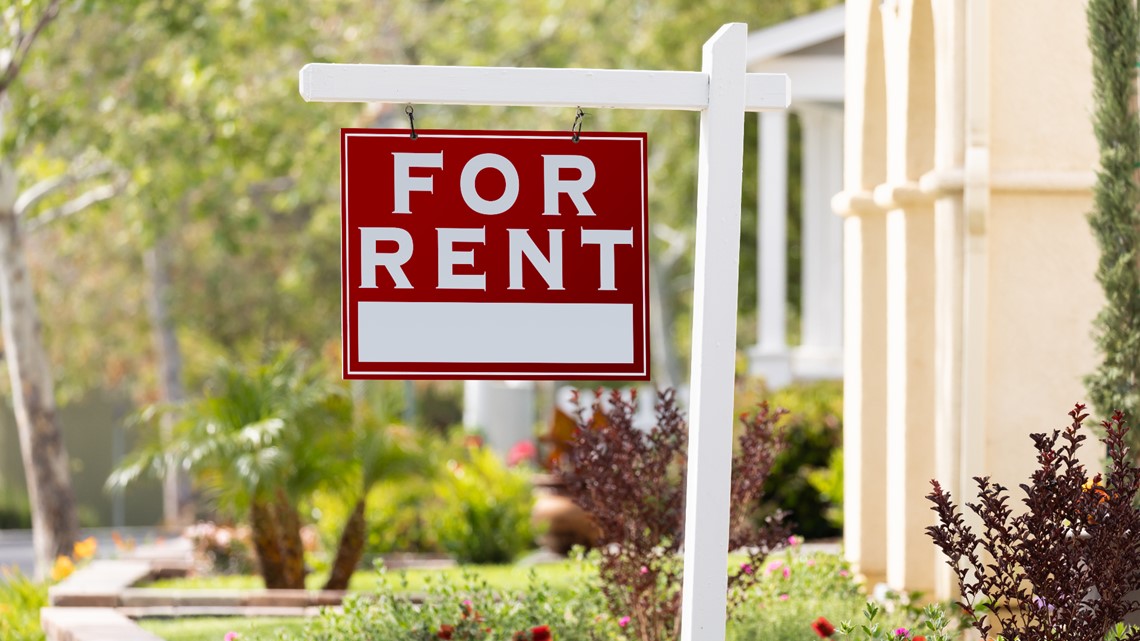SACRAMENTO, Calif. — State law caps the amount donors can give to a legislator’s campaign—but these special interests can spend as much as they like mounting their own campaigns to praise or trash candidates. And the money interest groups are pouring into these “independent expenditure committees” has reached dizzying heights.
So far more than $31 million of this unrestricted political spending has been pumped into California’s Assembly and Senate races.
“The spending is focused down on just a handful of competitive races but the numbers are enormous,” said Doug Morrow, who tracks spending with his political research group DSM Analytics.
Independent expenditure committees also tend to play hardball. If candidates go too negative, they risk turning off voters. But a committee with a nebulous name—say, the “Coalition to Restore California’s Middle Class” or “Keeping Californians Working"—can afford to offend whomever they like.
Here’s an exploration of the most lucrative spenders on these committees—and what they want out of the Capitol.
Oil and gas


Who they are:
As major employers in California with a unionized workforce and huge budgets to spend on campaigns and lobbying, oil companies such as Chevron, Valero and Phillips, as well as gas and electric utilities like PG&E and Sempra, have a lot of clout in the statehouse. But as the Capitol’s dominant Democrats push to combat climate change, oil, gas and other energy companies also face headwinds.
Where they’re spending:
The industry is spending big to help Republicans hold on to three SoCal swing seats in the state Senate and to boost a moderate Democrat battling a progressive-backed Democrat for a Stockton-area Assembly seat.
It’s poured more than $2.5 million into helping re-elect GOP Sen. Ling Ling Chang of Diamond Bar and more than $920,000 to re-elect GOP Sen. Scott Wilk of Santa Clarita—both of whom face stiff challenges from Democrats hoping to win these purple districts. Oil and gas interests and utilities have also spent more than $1.1 million to help Republican Rosilicie Ochoa Bogh, a Realtor who sits on the Yucaipa school board, who is running for an open Senate seat representing the San Bernardino Valley area against Democrat Abigail Medina.
The Democrat benefiting most from the oil industry is Carlos Villapudua, a former San Joaquin County supervisor running against Democrat Kathy Miller, who has been endorsed by the California League of Conservation Voters. Oil and gas interests have spent $1.3 million to help Villapudua, who has aligned himself with the Assembly’s moderate Democrats. Most of the spending—about 55 percent—has gone toward attacking Miller.
What they want:
When Democratic Gov. Gavin Newsom signed an order recently banning the sale of gas-powered cars in California by 2035—and asked the Legislature to send him a bill outlawing the oil extraction method known as fracking—the industry’s priorities for 2021 snapped into focus.
“Bans are not the way to solve problems,” said Catherine Reheis-Boyd, president of the Western States Petroleum Association. “We would not support a ban on any form of crude oil production in California…because it means more imports of foreign oil.”
In addition to fighting legislation that would outlaw hydraulic fracturing, the oil industry will almost certainly try to block efforts to expand the use of electric cars. Reheis-Boyd is calling attention to electric car batteries, many of the minerals for which are mined in Africa and China where, she said, “they still use child labor.” Environmentalists counter that oil production in foreign countries also can involve human rights abuses.
Oil lobbyists convinced lawmakers to kill legislation this year that would have required a buffer zone between oil wells and locations where children gather, such as schools and playgrounds. Sierra Club lobbyist Kathryn Phillips said environmentalists are preparing for another round.
“There is going to be a bill again on trying to get setbacks from oil wells,” she said. “And (oil) will be fighting that.”
Prison guards


Who they are:
The California Correctional Peace Officers Association was once a gale force to be reckoned with in state politics. At the height of California’s “three-strikes-and-you’re-out” crime crackdown, Democrats and Republicans alike feared getting on the wrong side of the guards.
The Great Recession, court orders to reduce the state prison populations, and a series of successful ballot measures to relax sentences all pushed the guards into a more defensive posture over the last decade. The union tamped down its spending and its fiery rhetoric and refocused on bread-and butter-issues—maintaining pay and improving working conditions.
Now it’s 2020 and the guards of old is trying to make a comeback. Under the new leadership of Glen Stailey, the union is once again gunning to become the “800-pound gorilla” of California elections.
Where they’re spending:
The guards have spent nearly $4 million this year with the bulk of that money pouring into two races.
In Orange County, Republican John Moorlach has served as the Senate’s most outspoken fiscal hawk. The union has spent nearly $1.4 million in the race—attacking Moorlach as a “Trump loyalist” and “anti-Science” or boosting his opponent, Democrat Dave Min, a law professor at UC Irvine.
The group has also spent more than $960,000 attacking Democratic Assemblymember Reggie Jones-Sawyer—including one ad that placed a bullseye over the Black politician’s face—and supporting his Democratic opponent, Efren Martinez, the former head of the Walnut Park Chamber of Commerce.
What they want:
In September, Newsom announced plans to close a prison in Tracy within a year. He’s said he’d like to close at least one more before 2024. And starting next summer, the state will begin phasing out its juvenile prison system entirely, shifting that responsibility down to the counties.
Daniel Macallair, director of Center on Juvenile and Criminal Justice and a critic of the union’s political activities, said he isn’t surprised the guards are spending big this year.
“Whatever keeps the prisons filled are things that they support,” he said. “With the current economic downturn and COVID-19 and all the pressures brought about from that, if the governor starts talking about closing prisons, that is kicking them into gear.”
The guards’ wrath has been bipartisan, aimed at both conservative budget hawks and liberal criminal justice reformers.
Stailey, the guard union’s president, did not respond to an interview request. But given Sen. Moorlach’s fiscal rectitude—he was one of four senators to vote against a 3 percent pay raise for the guards last year—it’s no surprise the guards would rather the Orange County senator retire this November.
“Maybe they want to make an example of me,” Moorlach said.
Jones-Sawyer, the union’s other top target, is no fiscal conservative. He’s a Bernie Sanders-endorsed progressive. He’s also backed tougher oversight of law enforcement officers, including prison guards, and less strict sentencing. As chair of the Assembly public safety committee, criminal justice bills generally do not become law without his blessing. Facing a surprisingly strong challenger in Martinez, the prison guards have rushed in to unseat him.
Teachers


Who they are:
Together, the California Teachers Association, the California Federation of Teachers and the California Faculty Association represent more than 450,000 public K-12 teachers and university professors. Both in membership and financial pull, the Teachers Association is the dominant force, a political behemoth with strong ties to the Capitol’s Democratic leaders.
Where they’re spending:
Unlike most interest groups that target heavy spending on a handful of legislative races, the teachers’ political operations spread cash around. They’ve spent more than $2 million cutting checks ranging from $10,000 to $40,000 to help dozens of incumbent Democrats running for re-election in noncompetitive races.
Teachers have also spent more than $695,000 trying to influence which Democrat voters send to Sacramento in a pair of expensive same-party contests. Teachers, like many labor unions, are backing Dave Cortese, a Santa Clara County supervisor and former mayoral candidate, in the race against attorney and campaign finance regulator Ann Ravel for a Silicon Valley seat in the state Senate. Through a joint committee with other organized labor groups, they’re helping incumbent Jones-Sawyer over fellow Democrat Martinez in the Los Angeles area race.
In similar joint ventures, the unions spent a combined $482,000 trying to flip two Orange County-based Senate seats from the GOP to Democrats. They’re helping Democrats Dave Min, a UC Irvine law professor, and Josh Newman, a former state senator who was recalled from his seat in 2018. Those two are trying to replace, respectively, Republican state Sens. Moorlach and Chang.
What they want:
Teachers perennially lobby for more funding for public education, but the push is likely to be particularly intense next year. The coronavirus pandemic has hammered government finances and upended the daily routines of millions of California students whose campuses have been shuddered since spring.
“We can’t open schools until it’s safe to do so, and right now it’s not safe,” said Claudia Briggs, a spokesperson for the California Teachers Association. “We don’t have ventilation, we don’t have testing and tracing.”
All that, of course, costs money.
Education groups may also tussle next year over how to teach reading. For two years, teachers have pushed a bill to eliminate a test requirement for new teachers to demonstrate they can teach phonics. The bill died amid objections from advocates who said removing the requirement would put kids at risk of landing in a classroom with a teacher who can’t help them learn to read.
But even advocates who opposed that bill acknowledge that too many teachers don’t have sufficient skills to teach reading, which contributes to students’ poor performance for many years to come. They say there’s not enough oversight of teacher training.
“We indeed have a structural problem that is sending novice teachers into classrooms ill-prepared to teach early reading to California children,” Bill Lucia, president of the EdVoice advocacy group, said by email. EdVoice also has a campaign committee, which has spent nearly $122,000 this year to support Martinez.
Realtors


Who they are:
The friendly folks who help Californians buy and sell their homes are also one of the most influential lobbying groups and campaign rainmakers in the state. Any policy debate that touches housing—how and where homes get built, how much landlords can charge for rent and how easy it is to buy and sell old homes—interests the Realtors.
Where they’re spending:
All over the place. The Realtors not only make their financial presence felt through their own committees, but they frequently pool their campaign cash with other well-monied interests. All together, roughly $2.3 million in Realtor cash has shown up in California legislative races.
Nearly $700,000 of that has been spent in two Bay Area Dem-on-Dem races.
Realtor cash is backing Cortese over fellow Democrat Ravel, teaming up with other powerful interest groups like the building industry, organized labor and the dentist lobby. Up the Peninsula, the Realtors have unleashed their own committee in support of San Francisco Sen. Scott Wiener, who hopes to fend off a challenge from Democratic Socialist Jackie Fielder.
The Realtors are also backing incumbents in competitive races across the state: more than $300,000 in support of Republican Sen. Chang over Democrat Newman and more than $100,000 a piece supporting Assemblymembers Steven Choi, a Republican, against Democratic challenger and Irvine City Councilmember Melissa Fox; Jones-Sawyer; moderate Republican Jordan Cunningham of San Luis Obispo, who is being challenged by Morro Bay City Councilmember Dawn Addis; and Republican-turned-independent Chad Mayes of Yucca Valley in his race against Republican San Jacinto mayor Andrew Kotyuk.
What they want:
The 2020 legislative session was the year that wasn’t for California housing policy. The Realtors want a mulligan.
In his ”State of the State” speech in January, Newsom vowed to put homelessness and housing at the “top of our agenda” and urged legislators to “say yes to housing.”
Then the coronavirus intervened, curtailing the legislative session, gutting the state’s spending power and scaling back everyone’s legislative ambitions. Even relatively modest housing supply boosters, such as a Realtor-backed bill that would have allowed property owners to build duplexes in neighborhoods zoned for single-family homes, failed to make it to the governor’s desk.
The targeted support of the two Bay Area candidates—Sen. Wiener in San Francisco, one of the state’s preeminent voices for more housing production, and Cortese in San Jose, a former housing developer and real estate investor—is an investment in more supply-related legislation.
A loss by Wiener would send “a real chilling effect on housing,” said Dan Dunmoyer, CEO of the California Building Industry Association, a financial ally of the Realtors in both races. Likewise, a Cortese win would add to the pro-production bloc in the Senate. “If you have to walk into a legislator’s office and explain how to build housing, that’s very different than if they can explain it to you.”
But the Realtors also want to maintain good relationships with incumbents and ensure a bulwark against new rent control measures and eviction moratoria.
That may explain the whiplash-inducing about-face the organization pulled in Antelope Valley this year. During the primary, the Realtors supported former Democratic Assemblymember Steve Fox, who is hoping to unseat incumbent Republican Tom Lackey. That spending helped Fox secure his place on the general election ballot. Many irate Democrats speculated at the time that this was a play to propel Fox, whom they saw as the weaker Democratic candidate during the primary, into a face-off with Lackey.
Sure enough, now that it’s Lackey versus Fox on the general election ballot, a group called the “California Alliance for Progress and Education” has spent more than $77,000 against Fox. Realtor groups have contributed at least 44 percent of that committee’s cash.
The California Association of Realtors did not respond to a request for comment.
Other big spenders


Health Care Industry Groups:
Altogether, hospitals, dialysis clinics, doctors, dentists and psychiatric technicians have spent nearly $3 million in independent expenditure hoping to influence this year’s competitive legislative races. But the health care industry contains multitudes and not all of these interest groups are on the same political page.
Dentists make up one of the largest sources of health care industry cash. A committee sponsored by the California Dental Association has spent half a million dollars to prop up some of the Assembly’s most vulnerable center-right members: Republican Phillip Chen in Diamond Bar, Republican Jordan Cunningham in San Luis Obispo and Chad Mayes of Yucca Valley, who defected from GOP and is now an independent.
But the biggest single beneficiary of health care industry independent spending has been Martinez over Jones-Sawyer in the Los Angeles area Assembly race. And his benefactors have been some strange allies.
Since the primary, kidney dialysis company DaVita—the largest funder of opposition to Proposition 23—has forked over $249,000 to a pro-Martinez committee. That investment was pooled with a slightly larger contribution from the Peace Officers Research Association of California. The committee, the “Coalition for Safe Communities” thus noted ”major funding from Peace Officers Research Association of California” in its title with no mention of the dialysis corporation.
Likewise, the trade group representing the pharmaceutical industry spent another $49,500 on a pro-Martinez committee co-funded with the pro-charter organization EdVoice. EdVoice kicked in $50,000 and its name was listed on the committee name.
Other Unions:
Even if you separate out the teachers, the nurses, the building trades, the prison guards and the cops, the organized labor groups that remain are still some of the most prolific election spenders.
Think the Service Employees International Union, the United Food and Commercial Workers, the United Domestic Workers, the Teamsters and the firefighters. These are all influential groups with a lot of money to spend. This year, all of that money has gone to support Democrats.
Cortese in San Jose has been the biggest beneficiary. Most of that support has come from the labor-run Opportunity PAC, one of the largest independent expenditure committees in the state, second only to the oil and gas industry’s committee. Though Cortese and his opponent Ravel are both Democrats, Cortese cemented his ties to organized labor when he ran for mayor in 2014 championing his opposition to the city’s pension cost cutting plan.
Tech:
In the heart of Silicon Valley, Uber and Lyft have opted to spend lavishly on their home turf.
So far this year a business-affiliated committee, the Silicon Valley Jobs PAC, has spent more than $2.5 million to boost Ravel over Cortese. Three-fourths of that committee’s contributions this year come from the two ride hailing companies. That works out to about $1.9 million in support of Ravel—or nearly 90% of all the independent expenditures the tech sector has piped into California’s legislative races this year.
No surprise: Ravel supports Proposition 22, the ballot measure sponsored by Uber and Lyft to exempt its drivers from California labor law. Cortese opposes the measure.
WATCH MORE: California coronavirus numbers trending upward



